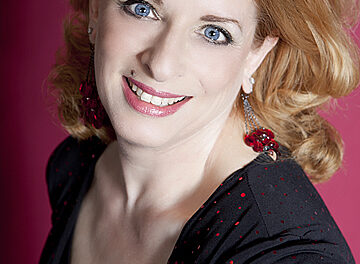 It’s been a helluva year, so the return of chamber music concerts to indoor venues marks – forgive us for mixing metaphors! – a big change in wind speed, direction, and lift. That’s why the appearance of Zéphyros Winds* in the auditorium of the NC Museum of Art for two one-hour concerts on Trinity Sunday afternoon, midway through Memorial Day weekend, presented by Chamber Music Raleigh, was such a significant occasion. There the five virtuosi were – in person, unmasked, standing not too far apart, fully-vaccinated (although we didn’t examine their papers), and playing for two sold-out, capacity audiences (well, the audience members were masked and distanced, so the hall wasn’t full either time). What a treat for us and – they said – for them, as they, like most of the rest of us, returned partially, sort of, to concert life as we had known it, pre-COVID. It was Zéphyros’ first live concerts in over a year, they said.
It’s been a helluva year, so the return of chamber music concerts to indoor venues marks – forgive us for mixing metaphors! – a big change in wind speed, direction, and lift. That’s why the appearance of Zéphyros Winds* in the auditorium of the NC Museum of Art for two one-hour concerts on Trinity Sunday afternoon, midway through Memorial Day weekend, presented by Chamber Music Raleigh, was such a significant occasion. There the five virtuosi were – in person, unmasked, standing not too far apart, fully-vaccinated (although we didn’t examine their papers), and playing for two sold-out, capacity audiences (well, the audience members were masked and distanced, so the hall wasn’t full either time). What a treat for us and – they said – for them, as they, like most of the rest of us, returned partially, sort of, to concert life as we had known it, pre-COVID. It was Zéphyros’ first live concerts in over a year, they said.
The program was a bracing bill-of-fare: Beethoven’s splendid Wind Quintet, “Tatu,” a relatively new work by David Sanford (b.1963), and a suite of four short excerpts from a larger transcription of music from Mendelssohn’s A Midsummer Night’s Dream, arranged by Ulf-Guido Schäfer.
The Beethoven is a curious piece in the catalog – it’s an arrangement by Mordechai Rechtman (b.1926) of Beethoven’s String Quintet, Op. 4 (1795), in turn based on the Op. 103 wind octet (1792 but not published till 1834). (There won’t be a short quiz next period.)
The music is gloriously Beethovenian – the first two movements are expansive exercises in non-stop delights, with numerous solo turns for all the players (and including an amazing clarinet-bassoon duet in the finale), each splendidly realized; one could wager that the composer never heard this music quite so brilliantly realized.
The new piece, composed in 2018, was premiered by Zéphyros at the IDRS Conference in Granada, Spain on August 29, 2019. Composer David Sanford, currently at Mt. Holyoke College, is jazz-influenced (he did his dissertation on Miles Davis) but the fingerprints are light: this listener heard snatches of impressionism here and there, some Stravinskian flourishes, and some strong rhythms, but only rarely suggesting an improvisatory lark. It’s serious, mostly, its first part enriched and darkened considerably by the addition to the musical fabric of a bass clarinet, the instrument that launches part two as well and continues the larger-than-life sound of the ensemble all the way to the work’s conclusion. There’s an impressive wind up to the finale but the piece is actually crowned by a somewhat sedate coda highlighted at one point by a wistful bassoon solo. A companion thought the music overstayed its welcome but I found the work enchanting and engaging throughout.
The MSND music played on this occasion consisted of portions of the Intermezzo, the “Elfin March,” the Scherzo, and “A Dance of Clowns” (Ein Tanz von Rüpeln). This was among the most brilliant of the afternoon’s musical offerings, with each member of the ensemble demonstrating his or her impressive artistic and technical chops repeatedly. There may have been disappointment among some listeners that Zéphyros’ great hornist wasn’t heard in the famous Nocturne, but here’s hoping that – and the other pieces that went unplayed – will figure in the ensemble’s next engagement here – soon! For now, this little suite was, all by itself, worth the full price of admission.
One is tempted to say that this was one of the most wonderful concerts heard all year, but that would be stating the obvious, wouldn’t it? Bravi tutti!
*The artists are Jennifer Grim, flute, Fatma Daglar, oboe, UNCSA professor Saxton Rose, bassoon, Zohar Schondorf, horn, and Marianne Gythfeldt, clarinet.











